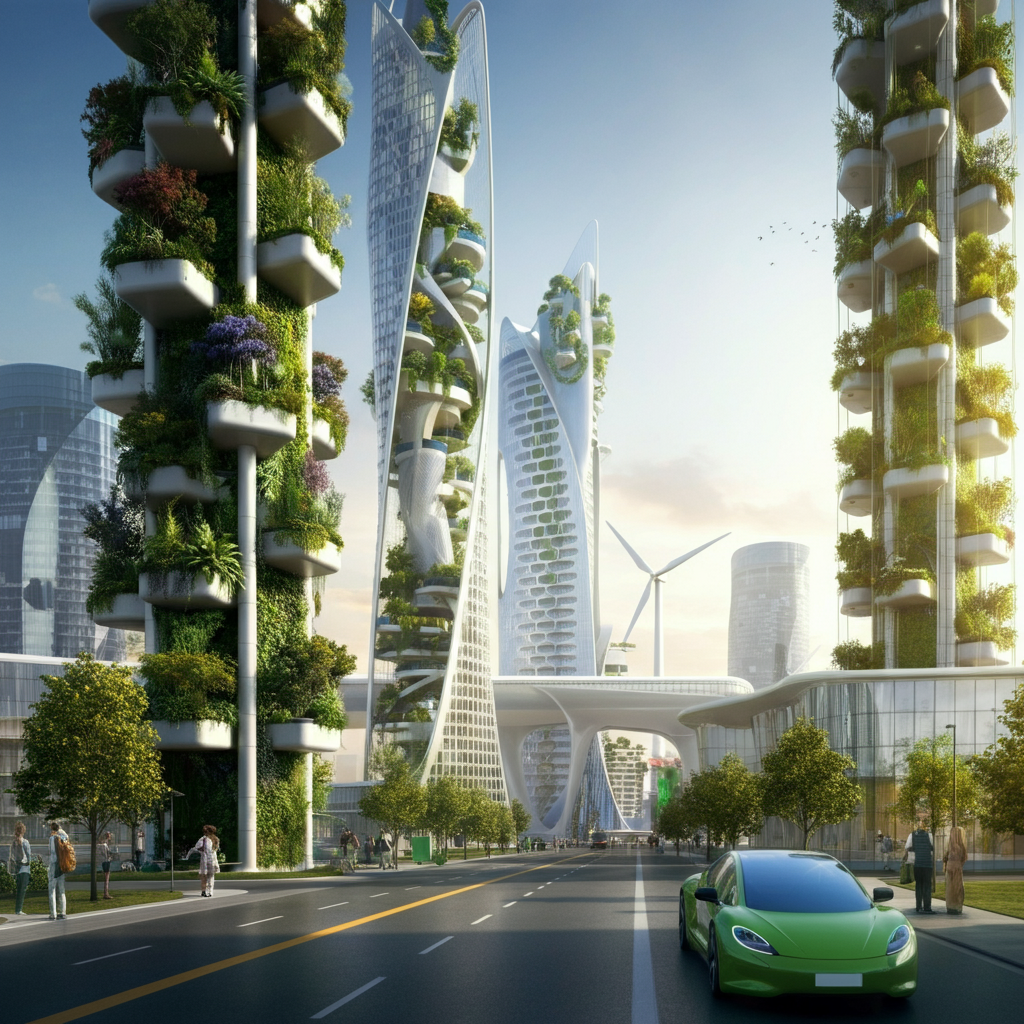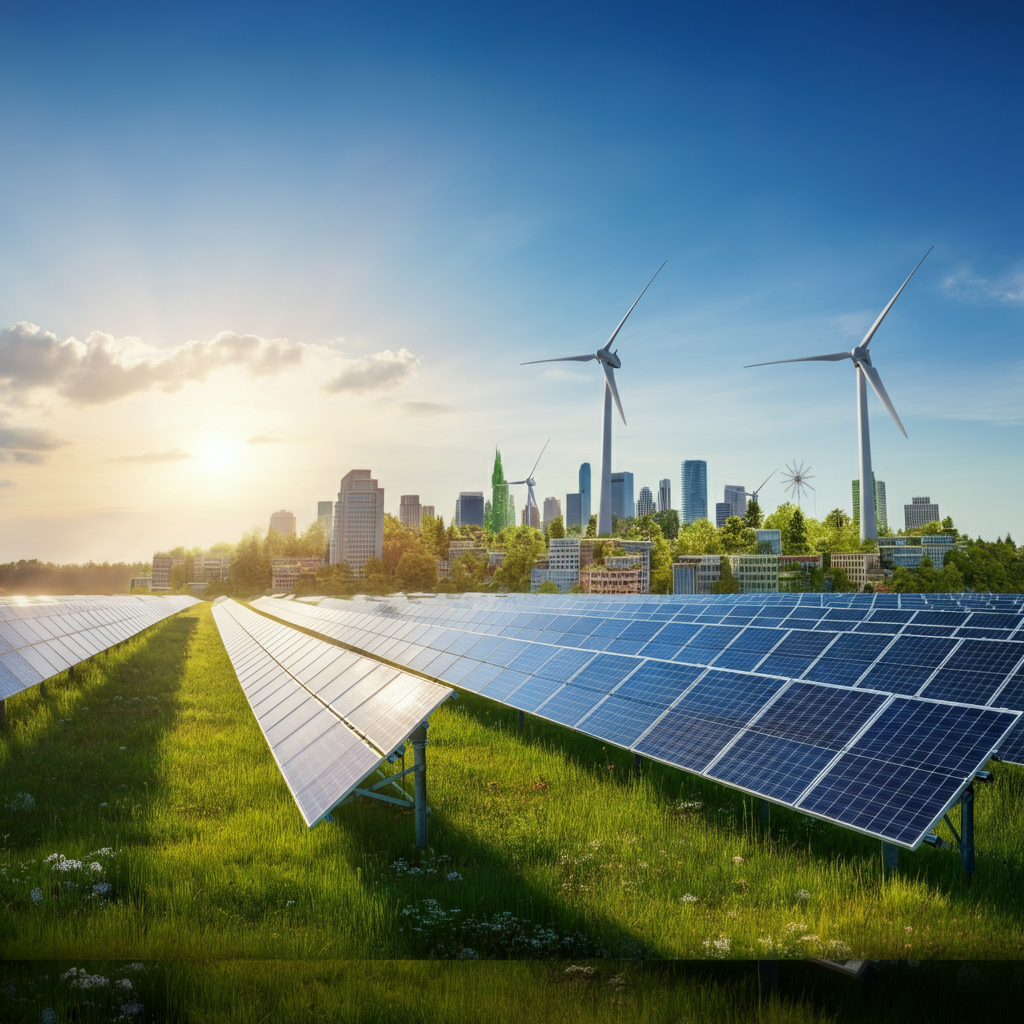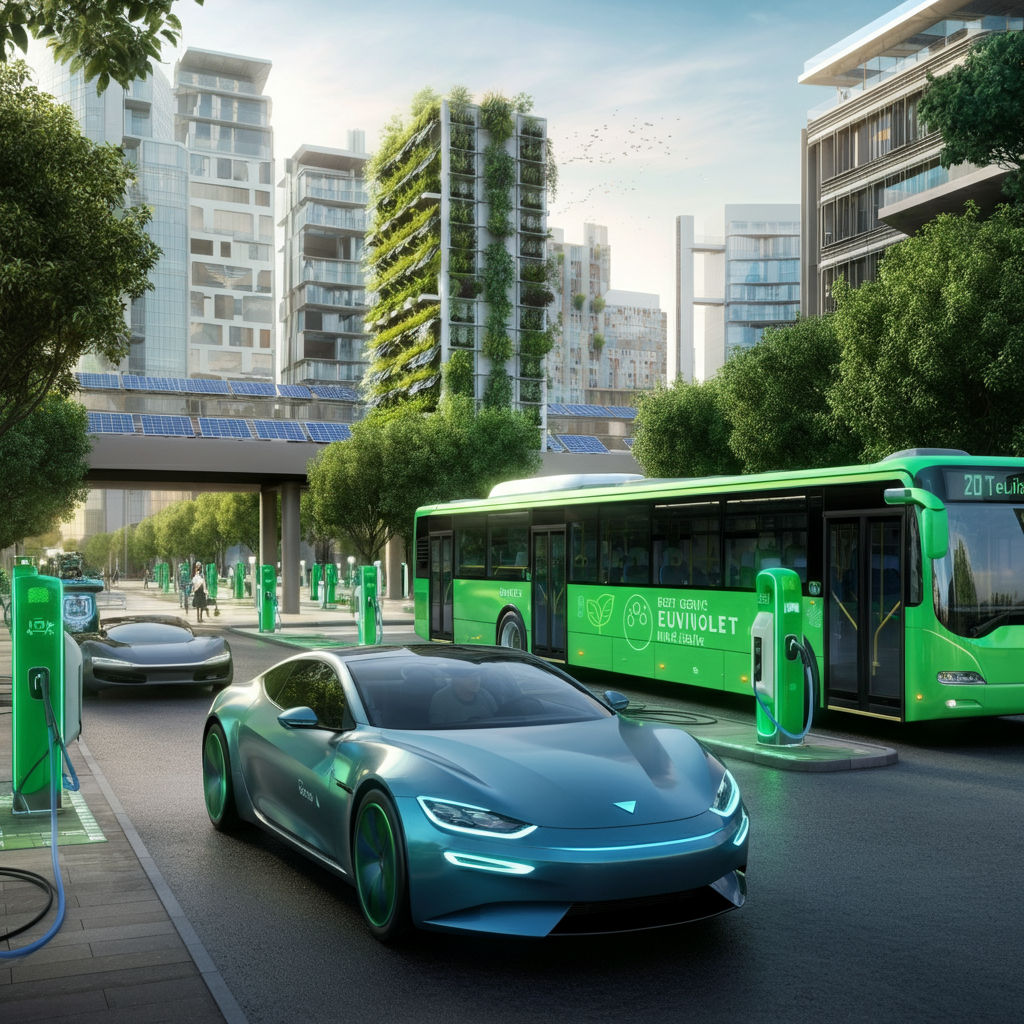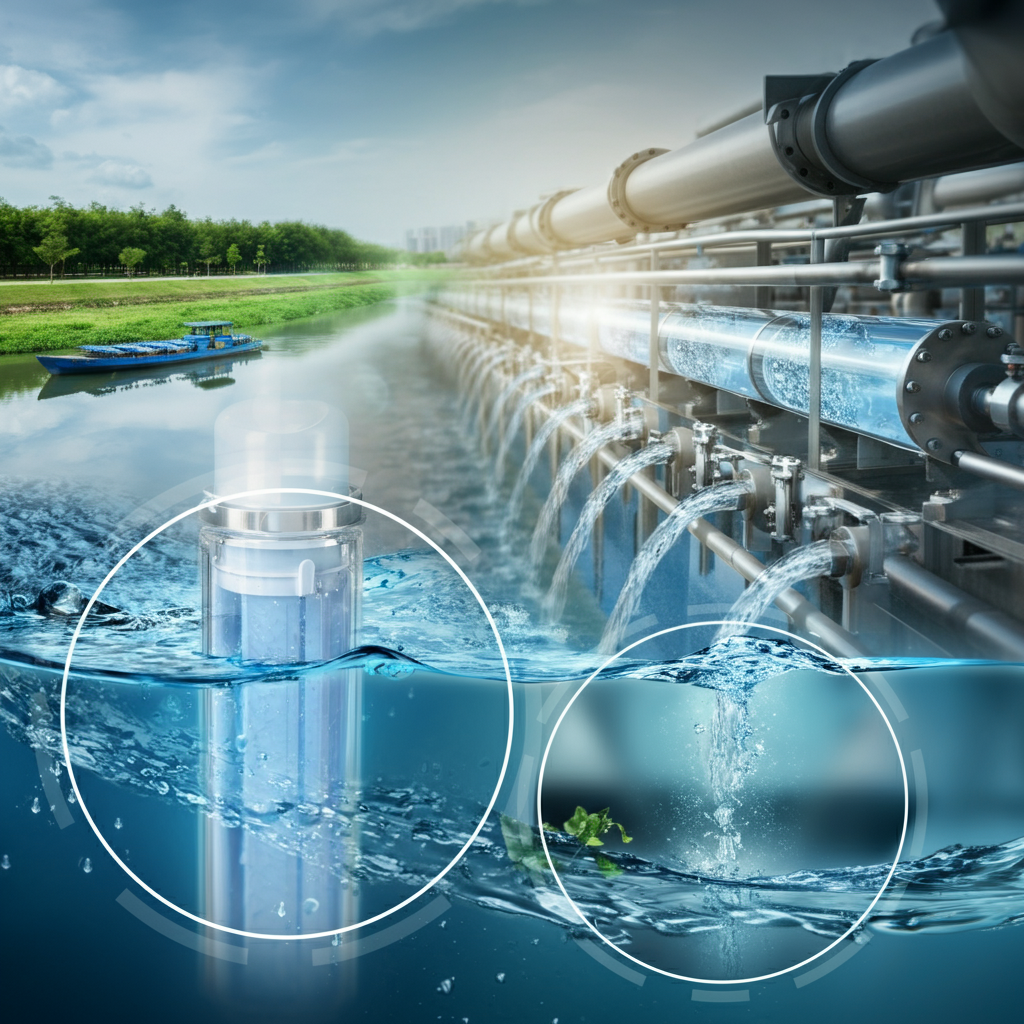10 Sustainable Innovations Leading the Green Revolution Today
The world today faces many challenges, such as pollution, climate change, and the depletion of natural resources. However, the green revolution is driving change with innovative solutions that not only protect our planet but also improve the quality of life for all. This article will explore 10 sustainable innovations leading the charge for a greener, more sustainable future. From solar panels to vertical farming, these innovations show how sustainability and technology are working hand-in-hand to solve global problems.
What Is Green Innovation?

Green innovation Refers to the creation of new products, processes, or services that reduce environmental impacts, promote sustainability, and help combat issues like pollution and climate change through regenerative practices. These innovations involve using renewable energy, reducing waste, and adopting eco-friendly practices. Green innovations are essential for achieving sustainable development and fostering a cleaner, healthier world for future generations.
Green innovation plays a key role in reducing our The concept of a carbon footprint is crucial for understanding our impact on nature-based solutions. and the effects of climate change. By embracing these solutions, we can conserve natural resources, minimize waste, and reduce pollution. With the help of new green technologies, we can create a future that is both sustainable and environmentally friendly, emphasizing the importance of sustainable business initiatives.
10 Sustainable Innovations Making an Impact Today
1. Solar Panels: A Revolution in Renewable Energy

Solar panels are one of the most well-known examples of green innovation. Solar power harnesses energy from the sun, a renewable energy source, and converts it into electricity. This technology has evolved over the years, becoming more efficient and affordable, contributing to the development of regenerative solutions. Solar panels reduce carbon emissions, lower energy consumption, and provide a clean, renewable energy source.
A real-world example is the rise of solar farms, which have drastically reduced dependence on fossil fuels. In countries like India and China, large-scale solar power installations are helping to address energy needs while also reducing huge amounts of carbon emissions. greenhouse gas emissions. Solar power is expected to grow as the technology improves and becomes even more affordable.
2. Vertical Farming: Rethinking Agriculture
As urbanization increases, vertical farming has become a game-changer. It involves growing crops in stacked layers, often using hydroponic systems that minimize water and energy use. This method reduces the need for large amounts of land and helps produce food in cities, cutting down on food miles and energy consumption. Vertical farming is also a sustainable solution to the growing demand for food as the global population increases, promoting green cities.
A notable startup in this field is Aerofarms, which uses vertical farming to produce greens in urban areas. This sustainable farming method is helping cities reduce their reliance on traditional farming, which often requires vast amounts of land and water. By embracing this method, we can make food production more sustainable and less damaging to the environment.
3. Electric Vehicles: Pioneering Green Mobility

The rise of electric vehicles (EVs) is one of the most exciting developments in green innovation. EVs use electricity rather than gasoline or diesel, significantly reducing the carbon footprint of transportation. As more people switch to electric cars, the impact on pollution and greenhouse gas emissions is expected to decrease dramatically.
Tesla, one of the most famous manufacturers of EVs, has not only produced electric cars but also pioneered innovations in battery technology to make them more efficient and affordable. By making the switch to electric vehicles, individuals and businesses alike are helping to reduce their environmental impact and reduce their reliance on fossil fuels.
4. Plastic Alternatives: Biodegradable Innovations
Plastic pollution has become a global crisis, but biodegradable plastics are offering a sustainable alternative. Companies are working on creating biodegradable materials that break down naturally in the environment, reducing plastic waste that often ends up in oceans and landfills.
For example, Notpla, a startup, has created biodegradable packaging made from seaweed that can replace single-use plastic packaging. This is an example of green innovation that tackles pollution while also offering an eco-friendly solution to everyday products.
5. Wind Energy: Harnessing a Natural Energy Source
Wind power has long been a staple of renewable energy, but new innovations are making it even more efficient. Wind turbines convert the kinetic energy of the wind into electricity, which is then used to power homes and businesses. Wind farms, especially offshore wind farms, are popping up all over the world to harness this clean, renewable energy source.
One example is the world’s first floating wind farm off the coast of Scotland. This innovative project uses floating wind turbines that can be installed in deeper waters, where traditional wind turbines can’t be placed. By harnessing wind power, we can reduce the carbon footprint and mitigate the impacts of climate change.
6. Smart Grids: The Future of Energy Management
Smart grids use technology to manage energy use more efficiently. By integrating renewable energy sources like solar power and wind energy, smart grids can help reduce energy consumption and improve energy efficiency. These systems can automatically adjust to demand, ensuring that energy is used wisely and that waste is minimized.
Smart grids are an excellent example of green innovation that supports sustainability while also helping to lower energy costs for consumers. As this technology becomes more widespread, we will likely see a reduction in the need for non-renewable energy sources.
7. Green Buildings: Designing for Sustainability
Green buildings use sustainable materials and energy-efficient designs to minimize their environmental impact. These buildings are designed to reduce energy consumption, improve air quality, and conserve water, making them an essential part of the sustainable development movement.
One example of a green building is the Bullitt Center in Seattle, often called the “greenest commercial building in the world.” It features energy-efficient systems, solar panels, and a rainwater collection system that make it net-zero energy. Green buildings like this one demonstrate how sustainable design can reduce energy use and contribute to a sustainable future.
8. Water Purification Technologies

Access to clean water is a challenge in many parts of the world. However, water purification technologies are making it possible to provide safe drinking water in areas where resources are scarce. These technologies use innovative methods like solar desalination, which uses solar energy to purify water.
One example of this is the Elemental Water Makers, a company that uses renewable energy to desalinate seawater, providing clean water to communities in need. By using renewable energy in water purification processes, we can address water shortages in a sustainable way.
9. Circular Economy Practices
A circular economy focuses on reusing materials, recycling, and minimizing waste. Instead of following the traditional linear model of “take, make, dispose,” this approach keeps resources in use for as long as possible, reducing waste and conserving natural resources.
IKEA has embraced circular economy practices by offering products that are designed for recycling and reuse. Their sustainable products are made from recyclable materials, and the company is working towards having all of its products made from renewable or recycled materials by 2030.
10. Carbon Capture and Storage (CCS) Technologies
Carbon capture and storage (CCS) technologies capture carbon dioxide emissions from industrial processes and store them underground, preventing them from entering the atmosphere. This technology is crucial for mitigating the effects of climate change by reducing carbon dioxide emissions from sectors that are hard to decarbonize.
One example of CCS in action is the Boundary Dam project in Canada, which captures and stores carbon emissions from a coal-fired power plant. This is an innovative way to continue using fossil fuels while reducing the environmental impact.
Case Study: A Startup Leading the Green Innovation Movement
One startup making a significant impact in the world of green innovation is Impossible Foods, a company that has revolutionized the food industry with its plant-based meat alternatives. Their goal is to reduce the environmental impact of meat production, which is a major contributor to carbon emissions and deforestation. By creating plant-based products that mimic the taste and texture of meat, Impossible Foods is helping to create a more sustainable food system. This innovation not only reduces the carbon footprint of food production but also helps to conserve natural resources.
Conclusion: The Future of Sustainable Innovation
The future of sustainable innovation is bright. As more people and businesses embrace green technologies and renewable energy, we will continue to see positive changes in how we live, work, and interact with the planet. Innovations like electric vehicles, solar panels, and vertical farming are just the beginning of what is possible when we focus on sustainability.
The need for sustainable solutions has never been greater, and with continued investment in green innovation, we can build a future that is both environmentally friendly and economically sustainable.
Trending Questions on Sustainable Innovation
What is an example of green innovation?
An example of green innovation is the development of electric vehicles (EVs), which reduce reliance on fossil fuels and lower carbon emissions.
How do solar panels contribute to sustainable development?
Solar panels provide a renewable energy source, helping to reduce carbon dioxide emissions and promote sustainable energy.
What are the key initiatives driving renewable energy today?
Key initiatives driving renewable energy include the development of wind turbines, solar panels, and smart grid technologies that integrate renewable sources into the energy grid.

Hi! I’m Muhammad Shahzaib. As a content writer focused on technology, I constantly seek out trending topics to deliver fresh, insightful articles. My goal is to keep readers informed and engaged with the latest and emerging innovations in the tech world.